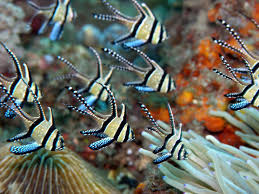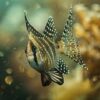Exploring the Relationship Between Dragons and Deities in Chinese Folklore
The dragon (lóng – 龙) is one of the most revered and powerful symbols in Chinese folklore, mythology, and religious traditions. Unlike the fearsome creatures of Western legends, Chinese dragons are often seen as benevolent beings, closely linked to gods, celestial forces, and spiritual realms.
Throughout history, dragons have been associated with rain deities, river gods, celestial emperors, and other divine figures, serving as their messengers, protectors, or even manifestations. This deep connection between dragons and deities has influenced Chinese religious practices, festivals, temple architecture, and artistic depictions for thousands of years.
This article explores the role of dragons in Chinese folklore, their relationship with major deities, and their influence on religious traditions and rituals.
1. The Dragon as a Divine Messenger in Chinese Mythology
In Chinese cosmology, dragons are not just mythical creatures—they are divine beings that bridge the human and celestial worlds. They are often seen as:
- Messengers of the gods, carrying their commands to the earthly realm.
- Celestial guardians, protecting sacred places and temples.
- Symbols of cosmic balance, representing yin and yang, water and fire, life and death.
Many Chinese deities are depicted riding dragons, emphasizing their control over natural forces and their divine status.
2. The Four Dragon Kings: Rulers of Water and Weather
One of the most well-known dragon-related deities in Chinese folklore is the Dragon Kings (龙王 – Lóng Wáng), who control the seas, rivers, and rain.
a) The Four Dragon Kings and Their Domains
Each of the Four Dragon Kings rules over a different sea and plays a crucial role in maintaining harmony in nature:
- Ao Guang (敖广) – Dragon King of the East Sea: Controls storms, typhoons, and monsoons.
- Ao Qin (敖钦) – Dragon King of the South Sea: Oversees rainfall and agriculture.
- Ao Run (敖闰) – Dragon King of the West Sea: Protects fishermen and marine life.
- Ao Shun (敖顺) – Dragon King of the North Sea: Governs water supply and winter rains.
b) The Dragon Kings in Chinese Religious Practices
- Temples dedicated to the Dragon Kings are found throughout China, where fishermen, farmers, and villagers pray for favorable weather and abundant harvests.
- During times of drought or floods, special rituals and ceremonies are conducted to appease the Dragon Kings and seek their blessings.
- Dragon dance performances during festivals honor the Dragon Kings and invoke their protection.
3. The Jade Emperor and His Dragon-Related Authority
The Jade Emperor (玉皇大帝 – Yù Huáng Dàdì) is the supreme deity in Chinese mythology, ruling over all celestial beings.
a) The Jade Emperor’s Connection to Dragons
- The Jade Emperor is often depicted riding a golden dragon, symbolizing his absolute authority over heaven and earth.
- He is believed to have the power to command the Dragon Kings, controlling the elements and ensuring cosmic balance.
- The Imperial Dragon Throne, used by Chinese emperors, was inspired by the Jade Emperor’s celestial rule.
b) The Jade Emperor’s Role in Dragon-Related Festivals
- The Chinese New Year Festival includes rituals honoring the Jade Emperor, with dragon dances symbolizing his celestial power.
- The Lantern Festival often features dragon-shaped lanterns, representing the Jade Emperor’s divine guidance.
- Temples dedicated to the Jade Emperor frequently contain dragon carvings and statues, reinforcing his sacred connection to these mythical creatures.
4. Nuwa: The Serpent-Dragon Goddess of Creation
a) Nuwa’s Role in Creation Myths
Nuwa (女娲) is a goddess with a serpent-dragon body who is credited with:
- Creating humanity from clay and breathing life into them.
- Repairing the heavens after they were shattered, using five-colored stones and the body of a giant turtle.
- Bringing order to the world, preventing floods and disasters.
b) Nuwa’s Connection to Dragons
- Her half-dragon, half-human form signifies the link between deities and dragons in Chinese cosmology.
- She is often depicted riding a dragon or accompanied by dragon-like creatures, emphasizing her power over nature and life itself.
- Ancient temples and shrines dedicated to Nuwa often feature dragon motifs, reinforcing her role as a divine protector.
5. The Dragon’s Role in Daoist and Buddhist Traditions
a) Dragons in Daoism
Daoism (Taoism) embraces dragons as symbols of wisdom, immortality, and cosmic energy.
- Many Daoist masters are depicted riding dragons, signifying their spiritual enlightenment.
- The Daoist Immortal Lü Dongbin (吕洞宾) is often shown subduing a dragon, symbolizing the mastery of the elements.
- Daoist temples frequently include dragon sculptures, representing the flow of qi (life energy) in nature.
b) Dragons in Buddhism
In Buddhist traditions, dragons are regarded as protectors of sacred teachings and scriptures.
- Nāgas (serpent-like dragons) are believed to guard Buddhist temples and relics.
- The Buddhist deity Guanyin (观音菩萨) is sometimes shown riding a dragon, signifying her compassion and power to save beings from suffering.
- Buddhist texts mention dragons offering pearls of wisdom to the Buddha, reinforcing their role as divine messengers.
6. Dragons in Temple Architecture and Religious Art
Throughout China, dragons are a dominant theme in religious art and temple architecture.
a) Dragon Carvings in Temples
- Temple roofs feature dragon sculptures, believed to ward off evil spirits and bring divine protection.
- Dragons are carved into temple pillars, symbolizing strength and cosmic order.
- Golden dragon murals in imperial palaces connect emperors to divine authority.
b) Dragon Statues and Offerings
- Worshippers often place dragon figurines in temples, praying for luck, protection, and success.
- Incense offerings to dragon statues are common in Daoist and Buddhist rituals.
- Water bowls in temple courtyards feature dragon spouts, symbolizing the life-giving force of water.
Conclusion: Dragons as Sacred Beings in Chinese Folklore
Dragons in Chinese culture are not merely mythical creatures—they are divine beings that serve as protectors, messengers, and manifestations of deities. Their close relationship with gods, emperors, and spiritual traditions has shaped centuries of folklore, religious practices, and artistic expressions.
From the Dragon Kings controlling the seas to the Jade Emperor riding a golden dragon, from Nuwa’s serpent-dragon form to the Buddhist Nāgas protecting sacred texts, dragons continue to be symbols of celestial power and divine harmony.
Even today, dragon imagery fills temples, festivals, and traditional ceremonies, reminding people of their sacred connection to the divine and their role as intermediaries between heaven and earth.


